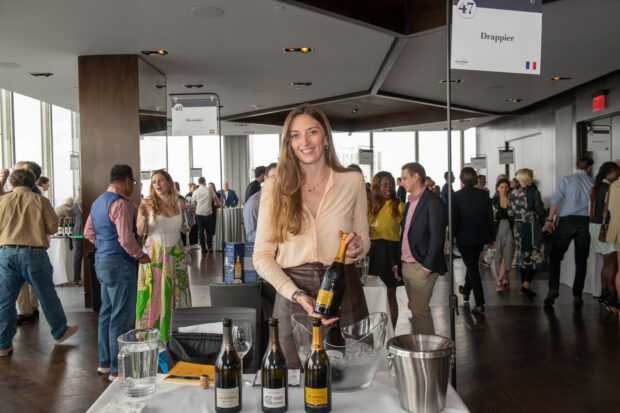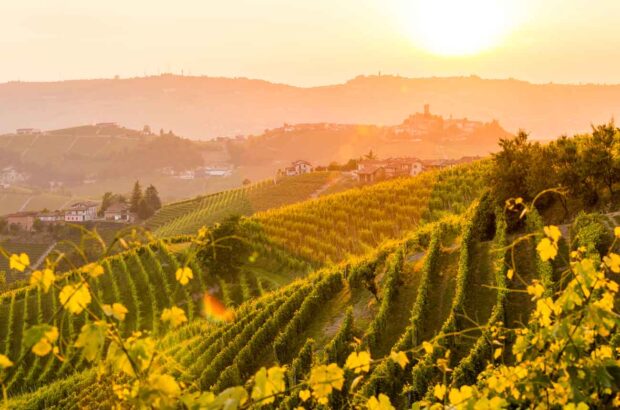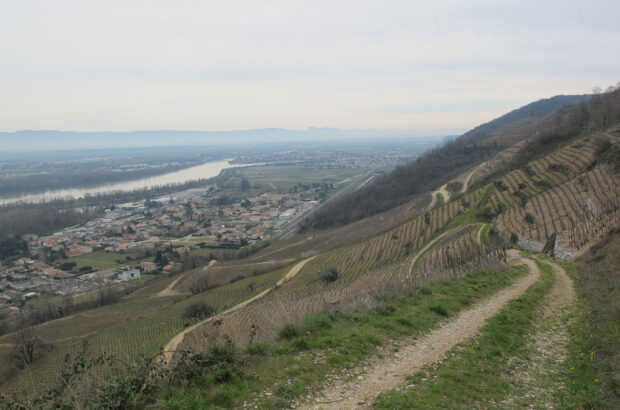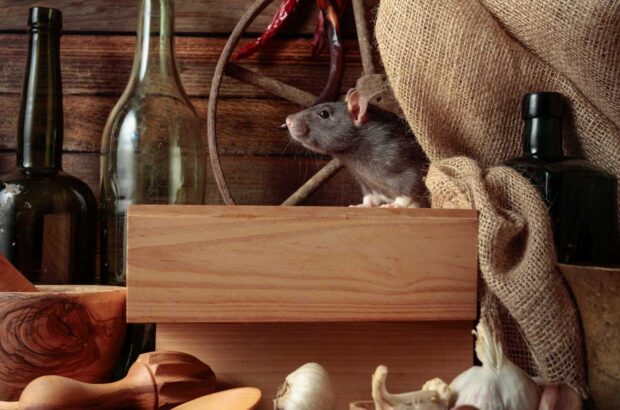There has never been a better time to visit Champagne. The region’s hotels, restaurants and visitor experiences are finally catching up to the reputation of the wines themselves.
There’s plenty to see around Reims and Épernay, both possible as day trips from Paris on the train, although it’s certainly worth getting out into the villages to escape the tour groups.
Top tips for visiting Champagne producers
Book in advance, preferably by at least two weeks, and make sure to call if you’re going to be more than a few minutes late. Bear in mind that the roads can be deceptively slow when the tractors are out during the summer months!
Lunch closures are sacred (including for car hire companies in Reims and Épernay), and don’t forget to check for when the numerous public holidays might fall.
Smaller producers are often more reluctant to take visitors during peak times of vineyard work (late June, July and around harvest), and all but the largest houses effectively shut down in August.
If you have the chance to do a little research into the house before you visit you’ll be rewarded. It’s always worth remembering that many smaller producers do not have dedicated staff for greeting guests and doing tours so are taking time out of busy days to share their work. Many smaller growers will not be able to sell you wine because their stocks are fully allocated, although Reims and Épernay have some excellent bottle shops where you might be able to find the wines. Despite this, fees for visits are generally reasonable compared to many other wine regions.
The top Champagne houses to visit:
Ruinart, Reims

Pavillon Nicolas Ruinart. Credit: Chloé Le Reste
A recent renovation means that visitors to Ruinart in Reims will now be treated to one of the region’s most striking visitor experiences. The visit includes the Gallo-Roman crayères (chalk pits) where the Champagnes age, the brand new Nicolas Ruinart Pavilion, designed by architect Sou Foujimoto, as well as sculpture gardens and 5,000 square metres of listed woodland.
When it comes to tasting the champagnes of this supremely elegant Chardonnay-focused house, the opportunities are no less tempting; the bar in the Nicolas Ruinart pavilion offers everything from the entry level non vintages to late disgorged editions of flagship Dom Ruinart and Ruinart Millésimé, not available elsewhere and, most unusually, by the glass.
Guided visits and tastings from €85 (£74).
Wine-matched lunches and dinners available at weekends from €140 (£121).
4 Rue des Crayères, 51100 Reims, France
+33 (0) 3 26 77 51 52
Taittinger, Reims

The new visitor centre at Taittinger’s Saint-Nicaise cellars
Taittinger’s historic cellars at 9 Place Saint-Nicaise reopened in 2024, and a new restaurant is imminent in 2025. Visitors can see the unique cellars, which are part of the World Heritage-listed cultural landscape of Champagne. They are built on the site of the 13th century Abbey of Saint-Nicaise, whose crypt, cellar and tunnels are linked with the same network of dramatic Gallo-Roman crayères that sit under the south part of Reims.
There is a selection of group tours to choose from. These can include tastings of Taittinger’s prestige cuvées Comtes de Champagne and Comtes de Champagne Rosé. There’s also the Instant Gourmet experience, which sees juicy and fruity prestige rosé Champagnes and long-aged vintage bottlings are paired with miniature dishes designed by renowned local chef Phillipe Mille.
Visits and tastings between €40-€100 (£35-£86).
9 Place Saint-Nicaise, 51100 Reims, France
visites@taittinger.fr
Pierre Paillard, Bouzy

Tours, tastings and dining experiences are all available at Pierre Paillard. Credit: Pierre Paillard
Brothers Antoine and Quentin Paillard are undoubted stars of the Montagne de Reims, with an impressive family domaine based in the grand cru village of Bouzy. It’s the perfect place to get an understanding for Pinot Noir on these sunny, chalky, south-facing slopes, with the cuvées showing perfectly pitched oak fermentation and food-friendly intensity.
This is an independent estate, so tour sizes are small and reservation is essential – made easy by a handy booking system on their website. Experiences include visits to the vineyard in Bouzy, cellar tours and tastings of four Champagnes, as well as a chef’s table dining experience. Look out for the still red Bouzy, one of the leading examples of a historic specialism of the village.
There are warm welcomes nearby at Brice, Paul Déthune and Eric Rodez, too – as with all independent producers, these are all by appointment.
Visits, tastings and dining experience between €80-€100 (£69-£86).
2 Rue du Vingtième Siècle, 51150 Bouzy, France
+33 (0) 3 26 57 08 04
visite@champagne-pierre-paillard.fr
Pierre Gimonnet & Fils, Cuis

The beautiful village of Cuis. Credit: www.champagne-gimonnet.com
Visiting independent growers is an essential part of any Champagne itinerary. Many of them work very small, localised parcels of vineyards, but at Gimmonet (one of the larger growers in the region) you can get to know a whole sub-region of Champagne: the northern Côte des Blancs, home of some of Champagne’s greatest Chardonnay. These are impeccably crisp, pure wines which present a vivid picture of the chalky slopes between Cuis and Oger. I
t’s best to book a visit in advance, although this is one of the rare growers that has published opening hours. After your visit, head down into the Côte des Blancs to find warm welcomes from producers such as Champagnes Lancelot-Pienne, Diebolt-Vallois, Delamotte, Franck Bonville, Doyard and Larmandier-Bernier.
1 Rue de la République, 51530 Cuis, France
+33 (0) 3 26 59 78 70
Moussé Fils, Cuisles

In the vineyards with the chickens at Champagne Moussé Fils. Credit: www.champagnemousse.fr
Heading west from Épernay, the Marne Valley is home to some of Champagne’s most charming landscapes. Gently folding hills and woodland replace the uniform carpets of vineyards found around the Montagne de Reims and the Côte des Blancs, and the Pinot Meunier grape is king. There is none of Champagne’s famous chalk near the surface here – Pinot Meunier thrives on the argile verte or green clay of the local area. With its impeccable vineyard work and an off-grid, sustainable winery full of unique innovations, Cedric Moussé’s family domaine in Cuisles is a top place to explore. You may even get to meet Moussé’s chickens or flock of vineyard sheep.
3 Rue de Jonquery, 51700 Cuisles, France
+33 (0) 3 26 58 10 80
100ans@champagnemousse.fr
Drappier, Urville

In the Drappier vineyards. Credit: www.champagne-drappier.com
Most visitors to Champagne arrive from Paris or the north of France, and miss out on the Côte des Bar region, 90 minutes drive south of Reims. From the stunning medieval town of Troyes (and nearby Chardonnay village Montgueux) to the rolling landscapes which are more naturalistic than the north, with farmland, woodland and pasture all cohabiting, the Côte des Bar is a now a hotbed of independent Champagne producers, many of which have moved on from selling their Pinot Noir grapes to the larger houses. Family-run Drappier is the key Champagne house of the south, with a lineup of naturally expressive, gastronomic Champagnes that champion Pinot Noir on the Kimmeridgian limestone that’s also found in Chablis.
Visit and tasting €25 (£22), by appointment
Rue des Vignes, 10200 Urville, France
+ 33 (0) 3 25 27 40 15
info@champagne-drappier.com
Ayala, Aÿ

The cellars at Ayala. Credit: www.champagne-ayala.fr
Aÿ is one of Champagne’s most important grand cru villages, opposite Épernay in the Grande Vallée de la Marne. Its Pinot Noir has been renowned for centuries, although the house of Ayala (sister house of better-known Aÿ stalwart Bollinger) works increasingly with Chardonnay to create attractively delicate, refreshing Champagnes. Sitting at the top of the village, the property boasts a terrace with superb views. Deeply atmospheric and beautifully lit cellars lie beneath the house, and the lineup of wines is increasingly impressive, especially the Blanc de Blancs and Perle d’Ayala.
Visits and tastings between €30-€105 (£26-£91)
1 Rue Edmond de Ayala, 51160 Aÿ, France
+33 (0)3 26 55 15 44
Gosset, Épernay

Maison Gosset. Credit: www.champagne-gosset.com
Épernay’s grand Avenue de Champagne is the region’s most famous street, but aside from Moët & Chandon and Perrier-Jouët, it is not furnished with as many top-notch visitor experiences as one might expect. Gosset, one of Champagne’s oldest houses based in Aÿ, now owns a fine property in the south of the town, set in a two-hectare park. Book a guided tasting of the house’s invigoratingly dry, taut Champagnes together with a visit into the chalk cellars beneath the domaine. There’s also a bar and terrace for an informal drink. If you’re on a day trip without a car it’s about a 30 minute walk to the picturesque vineyards of Pierry and Moussy. Alternatively, head to Champagne Alfred Gratien in the town centre for a contrast in Champagne styles.
+33 3 26 56 99 56
12 Rue Godart Roger, 51200 Épernay, France







